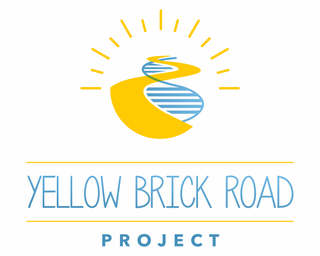Published Studies and Papers
This ultra-rare disorder, caused by variations on the HNRNPH2 gene, was first identified by Drs. Jennifer Bain and Wendy Chung, who published the first paper on the disorder in the American Journal of Human Genetics in September 2016. Since then, there are several other publications found below.
__________________________________________________________________________
Aug 2023
A Prospective, Longitudinal Study of Caregiver‑Reported Adaptive Skills and Function of Individuals with HNRNPH2‑related Neurodevelopmental Disorder
Objectives
This study presents a cohort of individuals in a natural history study with de novo pathogenic missense variants in HNRNPH2 causative of HNRNPH2-related neurodevelopmental disorder (NDD) to describe individuals’ adaptive functional abilities.
_________________________________________________________________________
May 2023
Rett-like Phenotypes in HNRNPH2-Related Neurodevelopmental Disorder
Abstract
________________________________________________________________________
Sept 2022
HNRNPH2-Related Neurodevelopmental Disorder
In September 2022, Dr Jennifer Bain and Dr Sehajvir Madhok published the first comprehensive gene review of HNRNPH2-Related Neurodevelopmental Disorder which summarizes the clinical characteristics, diagnosis and management of the condition.
_______________________________________________________________________
March 2022
A murine model of hnRNPH2-related neurodevelopmental disorder recapitulates clinical features of human disease and reveals a mechanism for genetic compensation of HNRNPH2
In March 2022, the team at St Jude Children’s Research Hospital published the findings of their HNRNPH2 research on BioRx. The paper summarizes their work with mouse models of HNRNPH2-Related Disorder and a potential avenue for treatment.
_______________________________________________________________________
Feb 2022
Variant-specific effects define the phenotypic spectrum of HNRNPH2-associated neurodevelopmental disorders in males
Abstract
Bain type of X-linked syndromic intellectual developmental disorder, caused by pathogenic missense variants in HRNRPH2, was initially described in six female individuals affected by moderate-to-severe neurodevelopmental delay. Although it was initially postulated that the condition would not be compatible with life in males, several affected male individuals harboring pathogenic variants in HNRNPH2 have since been documented. However, functional in-vitro analyses of identified variants have not been performed and, therefore, possible genotype-phenotype correlations remain elusive. Here, we present eight male individuals, including a pair of monozygotic twins, harboring pathogenic or likely pathogenic HNRNPH2 variants. Notably, we present the first individuals harboring nonsense or frameshift variants who, similarly to an individual harboring a de novo p.(Arg29Cys) variant within the first quasi-RNA-recognition motif (qRRM), displayed mild developmental delay, and developed mostly autistic features and/or psychiatric co-morbidities. Additionally, we present two individuals harboring a recurrent de novo p.(Arg114Trp), within the second qRRM, who had a severe neurodevelopmental delay with seizures. Functional characterization of the three most common HNRNPH2 missense variants revealed dysfunctional nucleocytoplasmic shuttling of proteins harboring the p.(Arg206Gln) and p.(Pro209Leu) variants, located within the nuclear localization signal, whereas proteins with p.(Arg114Trp) showed reduced interaction with members of the large assembly of splicing regulators (LASR). Moreover, RNA-sequencing of primary fibroblasts of the individual harboring the p.(Arg114Trp) revealed substantial alterations in the regulation of alternative splicing along with global transcriptome changes. Thus, we further expand the clinical and variant spectrum in HNRNPH2-associated disease in males and provide novel molecular insights suggesting the disorder to be a spliceopathy on the molecular level.
________________________________________________________________________
April 2021
Rare deleterious mutations of HNRNP genes result in shared neurodevelopmental disorders
Background: With the increasing number of genomic sequencing studies, hundreds of genes have been implicated in neurodevelopmental disorders (NDDs). The rate of gene discovery far outpaces our understanding of genotype-phenotype correlations, with clinical characterization remaining a bottleneck for understanding NDDs. Most disease-associated Mendelian genes are members of gene families, and we hypothesize that those with related molecular function share clinical presentations.
________________________________________________________________________
Feb 2021
Detailed Clinical and Psychological Phenotype of the X-linked HNRNPH2-Related Neurodevelopmental Disorder
Jennifer M. Bain, MD, PhD, Olivia Thornburg, BA, Cheryl Pan, Donnielle Rome-Martin, MS, OTR/L, ATR, Lia Boyle, BA, Xiao Fan, PhD, Orrin Devinsky, MD, Richard Frye, MD, PhD, Silke Hamp, MD, Cynthia G. Keator, MD, Nicole M. LaMarca, DNP, Alexis B.R. Maddocks, MD, Marcos Madruga-Garrido, MD, Karen Y. Niederhoffer, MD, Francesca Novara, PhD, Angela Peron, MD, Elizabeth Poole-Di Salvo, MD, MPH, Rachel Salazar, DPT, Steven A. Skinner, MD, Gabriela Soares, MD, Sylvie Goldman, PhD, and Wendy K. Chung, MD, PhD
Abstract
Objective
To expand the clinical phenotype of the X-linked HNRNPH2-related neurodevelopmental disorder in 33 individuals.
Methods
Participants were diagnosed with pathogenic or likely pathogenic variants in HNRNPH2 using American College of Medical Genetics and Genomics/Association of Molecular Pathology criteria, largely identified via clinical exome sequencing. Genetic reports were reviewed. Clinical data were collected by retrospective chart review and caregiver report including standardized parent report measures.
Results
We expand our clinical characterization of HNRNPH2-related disorders to include 33 individuals, aged 2–38 years, both females and males, with 11 different de novo missense variants, most within the nuclear localization signal. The major features of the phenotype include developmental delay/intellectual disability, severe language impairment, motor problems, growth, and musculoskeletal disturbances. Minor features include dysmorphic features, epilepsy, neuropsychiatric diagnoses such as autism spectrum disorder, and cortical visual impairment. Although rare, we report early stroke and premature death with this condition.
Conclusions
The spectrum of X-linked HNRNPH2-related disorders continues to expand as the allelic spectrum and identification of affected males increases.
Bain type of X-linked syndromic mental retardation in a male with a pathogenic variant in HNRNPH2. This study reports on two siblings, one male and one female, born to a consanguineous couple in India.
_______________________________________________________________________
April 2019
Find the full publication at the following link:
https://n.neurology.org/content/92/15_Supplement/P1.6-039
Sept 2016
Variants in HNRNPH2 on the X Chromosome Are Associated with a Neurodevelopmental Disorder in Females


Subsequent papers have been published as a result of evaluations conducted during the annual family meetings, as part of the critical Natural History Study.



